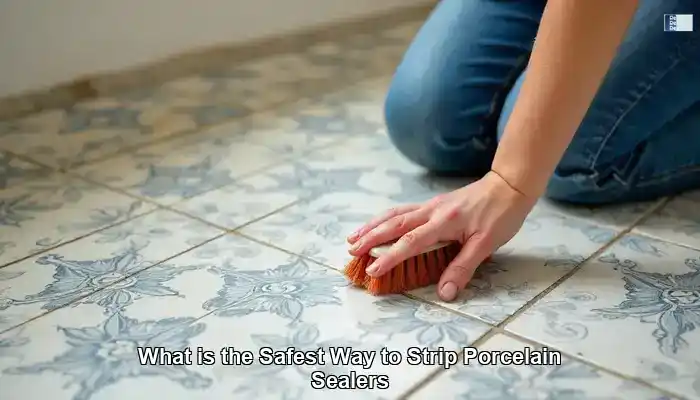
Enhance Your Knowledge of Porcelain Sealers for Optimal Surface Care
Porcelain sealers are essential for maintaining the durability and aesthetic beauty of porcelain surfaces. These protective coatings not only elevate the visual appeal of the material but also play a significant role in extending its lifespan. In the UK, where porcelain is a favored choice for tiles, countertops, and decorative objects, it is vital for homeowners and industry experts to gain an in-depth understanding of the various types of sealers available. By comprehending how each type of sealer works, you can make enlightened decisions that enhance the long-term performance, durability, and sustainability of your porcelain installations.
Exploring the Varieties of Sealers: Impregnating vs. Topical for Optimal Porcelain Tile Protection
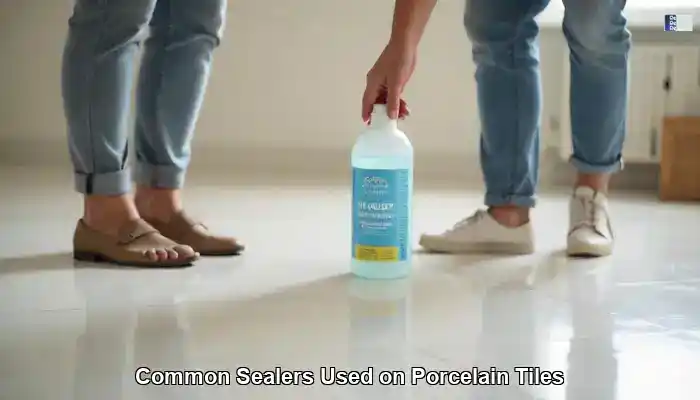
In the UK, impregnating (also referred to as penetrating) sealers are the preferred choice for sealing porcelain surfaces. These innovative sealers infiltrate the tile, providing protection from within while effectively preserving the natural beauty of the porcelain. By offering robust resistance against moisture and stains, these sealers protect the structural integrity of the porcelain, making them an excellent option for both indoor and outdoor applications.
Pro Tips: Recommended Products for Cleaning and Sealing Your Porcelain Tiles
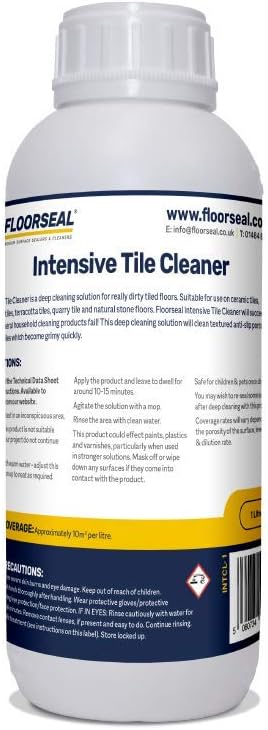
Floorseal
Intensive Tile Cleaner
|

EcoProtect
Porcelain Tile Sealer
|
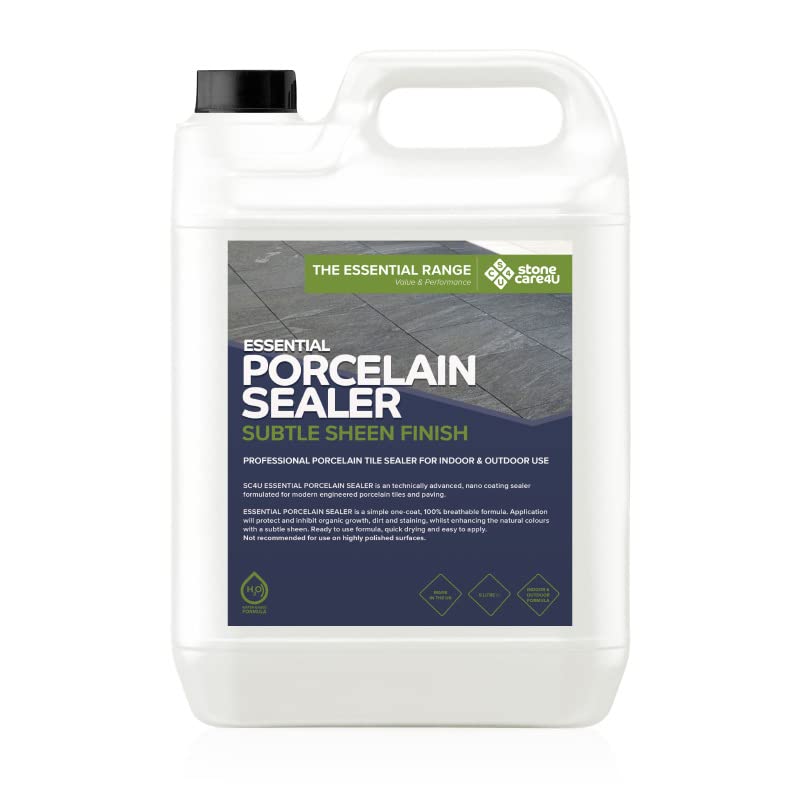
Stonecare4U
Essential Porcelain Sealer
|
Topical sealers function differently by adhering to the surface of the porcelain tiles and forming a thin protective film, rather than penetrating the material itself. Given the dense and non-porous characteristics of porcelain, standard sealers designed for porous materials do not bond effectively. Consequently, topical sealers specifically formulated for porcelain are equipped with adhesion promoters to enhance their bonding capabilities with the tile's smooth, glossy surface.
-
Typically, topical sealers are developed as either solvent-based or petroleum-based products, as these types bond more effectively to low-porosity surfaces like porcelain. However, due to rising environmental concerns, water-based sealers are increasingly becoming popular as viable alternatives.
-
The primary mechanism of adhesion relies on mechanical bonding through the formation of a surface film, rather than absorption into the tile's pores.
-
For optimal adhesion, the tile surface must be thoroughly cleaned, dried, and free from debris or residues before applying the sealer.
-
After applying the sealer—typically by spraying or wiping—allow it to cure properly. Skipping this step may result in peeling or ineffective adhesion of the film.
-
Regular maintenance is crucial, as the topical layer can wear away over time and require reapplication to maintain its protective properties.
If a topical sealer is not explicitly designed for porcelain, or if application instructions are not meticulously followed (such as insufficient cleaning or curing), the sealer may struggle to adhere and could peel off prematurely. Consulting the manufacturer's guidelines is always advisable for achieving the best results.
The Critical Role of Sealers in Preserving the Quality of Porcelain Surfaces
Utilizing sealers on porcelain surfaces is not just a cosmetic enhancement; it is a fundamental strategy to protect the longevity and structural integrity of the material. While many manufacturers market porcelain as non-porous, it is important to recognize that some tiles may contain micro-porosities resulting from inconsistent manufacturing practices—issues that might not be detected by the producers. These vulnerabilities can expose the tile to staining, moisture infiltration, and long-term deterioration, making effective sealing an imperative process.
Employing an impregnating (penetrating) sealer is considered best practice, as it penetrates the tile to create an invisible barrier that prevents contaminants and moisture from entering without altering the surface finish. This is particularly crucial in the UK's damp climate, especially in older homes, to avert discolouration and maintain both the appearance and functionality of the tile. Furthermore, penetrating sealers enhance the inherent beauty of the tile, making them an excellent choice for decorative applications where aesthetic quality is of utmost importance. Selecting the right sealer not only ensures the preservation of your tiles but also guarantees optimal performance for years to come.
Identifying Signs of Sealer Wear and the Need for Reapplication
Recognizing when it is necessary to strip or reapply a porcelain sealer is vital for maintaining the quality of your surfaces. Visual signs such as discolouration or a lackluster appearance indicate that the sealer has lost its protective effectiveness. Furthermore, if water does not bead on the surface, it is a clear sign that the protective layer has been compromised and requires immediate attention.
Since sealers are typically invisible, detecting wear and degradation can be challenging without performing a simple test. Tactile changes, such as a rough or sticky surface, may suggest that the sealer has deteriorated, but these signs may not always be noticeable. Homeowners should routinely inspect their sealed porcelain by applying a few droplets of water onto the tile. If the water spreads and soaks in, it signifies that the sealer is worn out. Conversely, if the droplets bead up, the protective layer is still intact and functioning effectively.
Implementing Safety Protocols for Stripping Porcelain Sealers Safely
Prioritizing safety is paramount when engaging in the task of stripping porcelain sealers. This process often involves the use of chemical substances that require careful handling, along with the implementation of appropriate protective measures to ensure a secure working environment.
The Importance of Wearing Protective Gear During Sealer Stripping
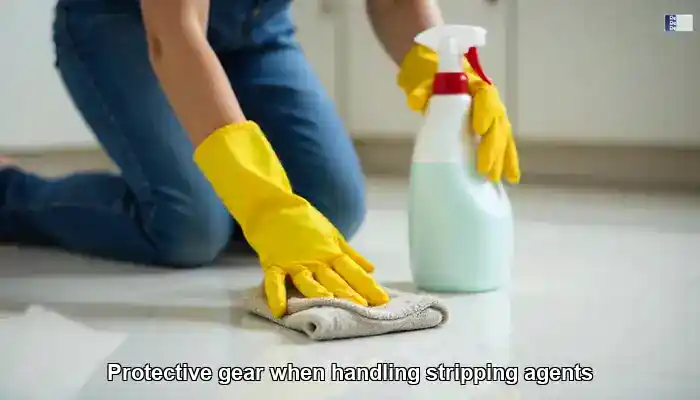
The use of appropriate protective equipment is critical when dealing with sealers and stripping agents. Homeowners and professionals alike should don gloves to shield their hands from potent chemicals that could induce skin irritation or allergic reactions. Safety goggles are indispensable for protecting the eyes from splashes and fumes that can lead to serious injuries.
A well-fitted mask or respirator is also highly recommended to prevent inhalation of harmful vapours. In the UK, where stringent regulations govern chemical handling, ensuring the appropriate use of protective equipment is vital not only for personal safety but also for compliance with health regulations. Remember, prevention is always better than cure; investing in high-quality protective gear can save you from potential hazards and health risks.
Ensuring Proper Ventilation During the Stripping Process
Proper ventilation is crucial when using chemical strippers, especially in confined areas. The fumes emitted from these products can pose serious health risks, leading to respiratory issues or chemical exposure. Open windows and doors to create a cross-breeze, ensuring that fresh air circulates effectively throughout the workspace. In smaller areas, utilizing fans to direct vapours outside can further enhance safety.
If possible, it’s advisable to conduct stripping work outdoors or in well-ventilated garages or sheds. Although the UK’s unpredictable weather may not always permit this, planning for adequate ventilation can significantly improve safety throughout the process. Always remain vigilant about air quality; if fumes become overwhelming, take a break and step outside until it is safe to return.
Key Guidelines for Safe Chemical Handling During Stripping
When using chemical strippers, it is imperative to adhere to the manufacturer's guidelines to effectively mitigate risks. Always read the labels and instructions carefully, as they provide essential information on safe handling, including dilution ratios and specific applications. In the UK, there are regulations regarding the disposal of chemical waste, and compliance with these guidelines is crucial to protect both human health and the environment.
Additionally, always store any chemical products securely, out of reach of children and pets. Familiarize yourself with the correct disposal methods for unused products or residues; many local councils in the UK offer hazardous waste collection services to ensure safe disposal. By following these guidelines, you contribute to a safer environment while safeguarding your health and that of those around you.
Choosing the Right Chemical Strippers for Effective Porcelain Sealer Removal
Chemical strippers are frequently the preferred method for removing porcelain sealers, but selecting and utilizing them wisely is essential to avoid unintentional damage. Understanding the different types available and their specific strengths and weaknesses can facilitate a smoother and safer stripping process.
Factors to Consider When Selecting a Chemical Stripper
In the UK, various formulations of chemical strippers are available:
- Solvent-based strippers are renowned for their rapid action and effectiveness in eliminating stubborn residues. However, they emit strong fumes and necessitate strict safety precautions, making them best suited for well-ventilated environments and professional use.
- Bio-based strippers, made from natural ingredients, are gentler on both users and the environment. While they are safer, they often require longer dwell times to achieve the desired results.
- <a href="https://limitsofstrategy.com/stripping-sealers-from-porcelain-tile-safely-and-effectively/">Water-based strippers</a> provide a balanced option—low in toxicity and suitable for indoor use, particularly where air quality and user safety are priorities.
Always confirm that the product is compatible with porcelain, as using incorrect formulations can compromise the tile's surface.
Essential Tools for Successful Stripping Projects
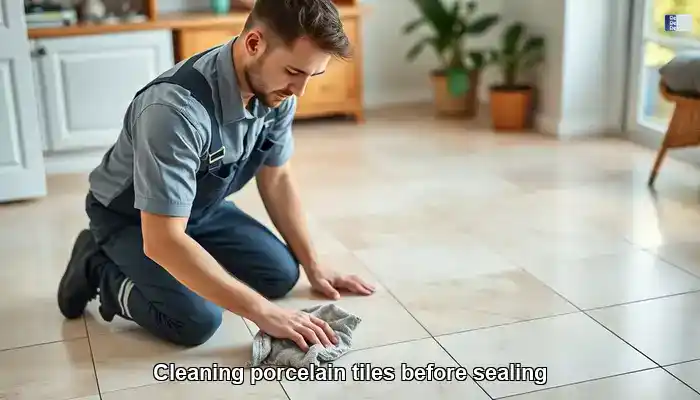
For most stripping projects, it is important to understand that impregnating sealer residues generally do not require complete removal, as they reside deep within the pores of the tile. Instead, the focus should be on thorough cleaning. Utilize a high-quality alkaline cleaner to eliminate surface contaminants such as dirt, grease, and oil. This preparation ensures proper adhesion for any new sealer applied to the tiles and grout, without disturbing the embedded protective layer.
Effective Application Techniques for Chemical Strippers
When applying chemical strippers, a meticulous approach is essential to ensure both safety and effectiveness. Begin by preparing the area, moving any furniture or items that could be damaged during the process. Use a paintbrush or roller to apply the stripper evenly across the surface, ensuring a thick, uniform layer is created for optimal effectiveness.
Allow the chemical to sit for the recommended duration, usually specified on the product label. This waiting time is crucial as it permits the stripper to penetrate the sealer effectively. After the designated period, utilize a scraper to gently remove the dissolved sealer. Exercise caution to avoid scratching the porcelain surface; a plastic scraper is often the best choice for this task.
Always adhere to the specific guidelines provided for the chemical being used, as application techniques can vary. Understanding the safest way to strip porcelain sealers not only ensures the task is completed successfully but also protects the integrity of your porcelain surfaces.
Neutralizing and Cleaning Up After Stripping
Once the stripping process is complete, it is vital to neutralize any residues left behind to prepare the surface for re-sealing. Many chemical strippers require neutralization with water, while others may necessitate specific neutralizing agents. Following the product instructions carefully is imperative to achieve the best outcomes.
After neutralization, thoroughly clean the area to eliminate all traces of the stripper. This step is essential, as any remaining chemicals could interfere with the application of new sealers. Use clean water and a mop or rag to wipe down the surface, ensuring it is free from dirt and chemical remnants. Proper cleanup guarantees that the newly sealed surface adheres well and performs optimally for years to come.
Leveraging Mechanical Agitation Methods to Increase Stripping Efficiency
While chemical strippers are essential for removing porcelain sealers, mechanical agitation serves as a supportive method—particularly in enhancing the action of the chemical, rather than grinding down the tile surface. Given the dense, often glazed nature of porcelain, abrasive methods such as sandpaper, scrapers, or steel wool should be avoided, as they can cause irreversible damage to the surface.
Implementing Safe Mechanical Agitation Techniques
Mechanical agitation should focus on enhancing the performance of chemical strippers, especially in textured areas and grout lines. The most effective methods include:
- Stiff bristle brushes for manual scrubbing of grout and textured zones, ensuring deep cleaning without harming the tile.
- Red pads on a rotary floor machine for gentle agitation across larger areas, providing effective cleaning without risking damage.
- Detail brushes or white pads for intricate edge work, allowing for precision cleaning without compromising the tile finish.
These tools assist in breaking down sealer residues and embedded contaminants without damaging the tile. Always allow the chemical to dwell for the recommended time before initiating agitation. Rushing the process or overworking the surface may diminish effectiveness and increase the likelihood of errors.
Key Safety Measures During Mechanical Agitation
Safety is paramount when employing mechanical methods. Always wear eye protection to shield against debris and dust during the process. Gloves are also recommended to protect your hands from cuts or abrasions, ensuring a safer working environment. Keeping a clean and organized workspace reduces the chances of accidents, so promptly clear away any dust or residue.
Consider using a dust mask to prevent inhalation of fine particles, especially when sanding or working with materials that generate dust. Additionally, ensure that the porcelain surface is securely affixed to avoid any movement during the stripping process. Implementing these safety measures will not only protect you but also enhance the overall effectiveness of your work.
Caring for Tools Post-Stripping
Following the completion of a stripping job, it is crucial to maintain your tools to ensure their longevity. Thoroughly clean all abrasive tools after use, removing any sealant residue that may have accumulated. Store them in a dry environment to prevent rust or degradation, particularly for metal scrapers.
Investing in high-quality tools can significantly impact the success of future projects. Regular inspections for wear and tear will help you determine when it’s time to replace your tools. Keeping your equipment in optimal condition ensures that you achieve the best results every time you work on a project, including mastering the safest way to strip porcelain sealers.
Exploring Eco-Friendly Alternatives for Stripping Porcelain Sealers
As awareness of environmental issues increases, many individuals in the UK are seeking eco-friendly alternatives for stripping porcelain sealers. These options can be less harmful while still delivering effective results.
Utilizing Natural Strippers for a Greener Approach
Natural strippers often incorporate plant-based ingredients to dismantle sealers without the harsh chemicals typically associated with traditional strippers. In the UK, products derived from citrus or soy are popular choices. These alternatives are generally safer for both users and the environment, minimizing harmful fumes and residues.
Many natural strippers can also be employed indoors without the same concerns regarding toxic exposure as their chemical counterparts. However, it’s important to bear in mind that while they are less harmful, they may necessitate longer application times to achieve results comparable to those of stronger chemical strippers.
Application Techniques for Natural Strippers
Applying natural strippers follows a process similar to traditional methods. Use a brush or roller to evenly cover the surface, allowing ample time for the product to penetrate and work effectively. It is vital to adhere to the manufacturer’s instructions concerning application time, as different products may vary significantly in efficacy.
Once the natural stripper has completed its task, use a soft cloth or scraper to remove the sealer, taking care not to damage the porcelain surface. Rinse thoroughly with water to ensure all stripper residues are removed before allowing the surface to dry completely.
Assessing the Effectiveness and Limitations of Eco-Friendly Strippers
While eco-friendly methods offer a safer alternative, they can have limitations compared to traditional chemical strippers. For heavy-duty stripping tasks, natural products may not deliver the same speed or efficiency, necessitating additional effort and time.
However, for routine maintenance or lighter sealing applications, eco-friendly strippers can prove more than sufficient. They are particularly valuable for individuals conscious of their environmental footprint and seeking to minimize exposure to harsh chemicals. Understanding the safest way to strip porcelain sealers, with a focus on eco-friendly options, aligns perfectly with a sustainable lifestyle.
Recognizing When to Seek Professional Help for Stripping Porcelain Sealers
In certain situations, enlisting the help of professionals for stripping porcelain sealers may be the most prudent course of action. Knowing when to seek expert assistance can save time and prevent costly damage to your surfaces.
When is it Best to Call in the Experts?
There are specific circumstances where professional services for stripping porcelain sealers are advisable. If the porcelain surfaces are extensive or intricate, attempting to manage the task without adequate experience can lead to expensive mistakes. Furthermore, if the prior sealing job involved multiple complex layers or particularly stubborn sealers, a professional’s expertise is invaluable in ensuring thorough and safe removal.
Additionally, if you are unfamiliar with handling chemicals or mechanical tools, the risks associated with improper usage can lead to significant damage or health issues. In such cases, seeking professional help alleviates concerns and guarantees a satisfactory outcome.
How to Choose the Right Service Provider for Your Needs
When selecting a professional service for stripping porcelain sealers in the UK, it is crucial to seek reputable companies with established track records. Online reviews, testimonials, and recommendations from friends or family can provide invaluable insights. Ensure that the provider is appropriately licensed and insured, as this protects you from potential liabilities throughout the stripping process.
It is also wise to inquire about the methods and products they employ to ensure they align with your preferences, particularly if you are interested in eco-friendly options. A reputable service provider will be transparent about their processes and willing to address any questions you may have.
What to Expect from Professional Stripping Services
Engaging professionals for stripping porcelain sealers typically involves a structured process. Initially, they will assess the condition of the porcelain and the type of sealer that has been applied. This evaluation aids in determining the best approach for effective stripping.
Once the assessment is complete, the professionals will prepare the area, protecting surrounding surfaces from dust and damage. They will then proceed with the stripping using their selected method, whether chemical or mechanical, ensuring safety and efficiency throughout the process. After completing the stripping, they will tidy the area and may provide recommendations for re-sealing or ongoing maintenance.
Understanding the Costs Involved with Professional Stripping Services
Familiarizing yourself with the costs associated with professional porcelain sealer stripping services in the UK is crucial for effective budgeting. Prices can vary considerably based on factors such as the size of the area, the type of sealer being removed, and the methods employed. On average, homeowners can anticipate paying between £100 and £300 for professional stripping services, contingent on these variables.
While this may seem costly initially, hiring professionals can ultimately save you money by preventing damage that might arise from DIY attempts. It is advisable to obtain quotes from multiple service providers to ensure you receive the best value for your investment.
Ensuring Compliance with Safety and Legal Standards During Stripping
It is crucial to ensure that the professional service you choose adheres to UK regulations and safety standards for stripping porcelain sealers. Reputable companies will comply with all relevant health and safety regulations, ensuring a secure working environment for both their employees and clients.
Do not hesitate to inquire about their safety protocols and environmental practices. A responsible service provider will prioritize safety and sustainability, aligning with your values. This commitment not only protects you during the stripping process but also contributes positively to the community and the environment.
Essential Aftercare Steps for Maintaining Stripped Porcelain Surfaces
Once the stripping process is complete, it is essential to provide proper care for the porcelain surface to maintain its beauty and longevity. Following appropriate procedures ensures that the freshly stripped surface is ready for re-sealing or further treatments.
Thoroughly Cleaning the Surface Post-Stripping
Cleaning the surface meticulously after stripping is vital to remove any remaining residues and ensure that the new sealant adheres appropriately. Start by rinsing the area with clean water to wash away lingering chemicals or dust. For stubborn residues, a soft cloth or non-abrasive sponge may be necessary to avoid scratching the porcelain.
Once cleaned, allow the surface to dry completely before applying a new sealer. This step guarantees that no moisture is trapped beneath the sealant, which could lead to future issues such as mould or peeling. Regular maintenance and cleaning of stripped surfaces will keep them looking pristine for years to come.
Your Questions Answered: FAQs About Porcelain Sealers and Maintenance
What is the safest way to strip porcelain sealers effectively?
The safest approach involves wearing protective gear, ensuring proper ventilation, and selecting suitable stripping methods, whether chemical or mechanical. Always adhere to the manufacturer’s instructions for the best results.
How often should I strip and reapply porcelain sealers for optimal results?
The frequency of stripping and reapplying porcelain sealers typically depends on the extent of wear and tear. Generally, inspecting surfaces every 1-3 years is recommended; however, it is also advisable to conduct routine checks for signs of wear.
Can I strip sealers myself, or is professional help recommended?
This largely depends on your experience and the size of the area. DIY is suitable for smaller jobs, but professional assistance is advisable for larger or more complex projects.
What are the environmental impacts of using chemical strippers?
Chemical strippers can release harmful fumes and pollutants into the environment. Eco-friendly alternatives are available that minimize environmental impact and reduce exposure risks.
How can I determine if my porcelain sealer needs stripping?
Indicators include discolouration, dullness, or the lack of water beading on the surface. These signs suggest that the sealer’s effectiveness has diminished, warranting attention.
Are eco-friendly strippers effective for porcelain sealers?
Yes, eco-friendly strippers can be effective, particularly for lighter applications. However, they may take longer than traditional chemical strippers for heavy-duty tasks.
What protective gear is necessary for stripping sealers?
Essential protective gear includes gloves, safety goggles, and a mask to prevent inhalation of fumes and exposure to harsh chemicals.
How should I dispose of leftover chemical strippers?
Follow local regulations for the disposal of hazardous waste. Many councils in the UK provide collection services for the safe disposal of chemical products.
What maintenance steps are needed after stripping?
Post-stripping maintenance includes thoroughly cleaning the surface and ensuring it is properly dried before reapplying any new sealers.
Can mechanical methods cause damage to porcelain surfaces?
Yes, improper use of mechanical methods can cause damage to porcelain. Always employ appropriate tools and techniques to minimize the risk of scratches or chips.
The article Porcelain Tile Nightmare: How to Strip Sealers Without Ruining Your Floor was first found on https://www.abbeyfloorcare.co.uk
The Article Stripping Sealers from Porcelain Tile Without Damage appeared first on https://fabritec.org
The Article Stripping Sealers from Porcelain Tile Safely and Effectively Was Found On https://limitsofstrategy.com


This post on porcelain sealers resonates deeply with me, especially considering how much of our daily lives revolves around our choice of home materials. Having recently renovated my kitchen, I learned firsthand about the significance of sealers—not just for aesthetics but for practicality. Choosing the right sealer made a lasting impact on both the look and longevity of my porcelain tiles.
Isn’t it wild how the choices we make about materials can turn our homes into little kingdoms of style and function? I totally get where you’re coming from—renovating a kitchen is like being the monarch of your own castle, and sealers are those unsung heroes bridging beauty and practicality. It’s a bit like finding the right pair of shoes: they need to look good and also not make your feet scream by the end of the day.